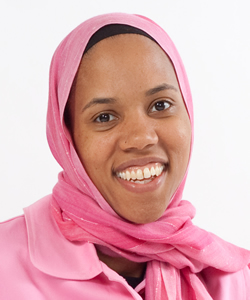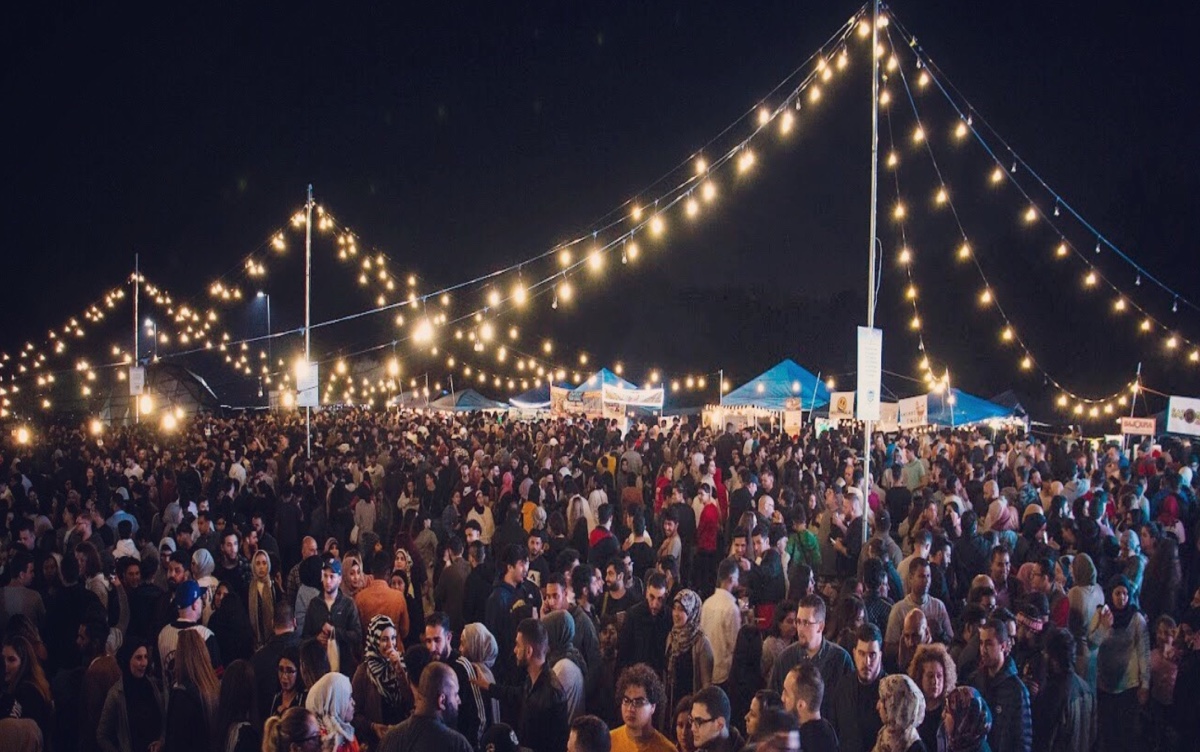Jamillah Karim on gender, race and Islam
By Crystal Corman
Dr. Jamillah Karim’s lived experience and research highlight the diversity within Islam in the United States, as well as perceptions toward African American Muslims. In this interview, Karim discusses her motivation to study gender and race within Islam in the United States, as well as her experience researching this topic in immigrant communities.
What drew you to study gender and race within Islam in the United States??
Growing up in a community with roots in the Nation of Islam, I understood Islam as a faith that could uplift and elevate communities. That’s the meaning that Islam had for people in the Nation of Islam: they were coming to this movement that was going to improve their lives economically, in particular. People were attracted to the way they were nation building, establishing their own businesses and schools. And also the positive racial message of Islam was obviously relevant at the time when African Americans were seen as inferior. Growing up, this is what I repeatedly heard, that Islam can be socially elevating.
The focus on women came in because they were always at the center, and were important role models for me. It wasn’t until graduate school, however, that I understood this importance. I told my grad advisors that I wanted to focus on Islam and race for the reasons I just described. They then said that I had to do something about women. I responded, “Why?” I had very little knowledge of feminism and actually thought it was something to be avoided. I thought feminism was against religion. I’d also heard people use the narrative that Islam was oppressive to women; by the time of graduate school, I wanted to distance myself from that narrative because I didn’t see it as true. I imagined that focusing on women would mean that I’d be playing into that narrative.
It was my professor Miriam Cooke who helped me understand that this could be an opportunity to show that in fact Muslim women are empowered by their faith. She was working on a project making this case and took from the work of a black feminist scholar. She suggested that I also look at black feminist thought.
The work of black feminists – who look at the ways in which discrimination against black women occurs at the intersection of race and gender constructs – became very influential. When I was learning about black feminist thought, the faith piece came up, because my faith has always been an important part of who I am. I wanted to look at the intersection of race and gender identities for Muslim women. I also wanted to respond to Paula Giddings, a visiting scholar at Duke who taught my course on black feminism, who was saying that the Nation of Islam was oppressive. It was an opportunity to engage that popular belief.
How did you come to focus on race and ethnicity of Muslims in the United States???
In college at Duke University, the majority of the students in the Muslim Student Association (MSA) were the children of immigrants and didn’t have a lot experience with African American Muslims. They were kind and welcoming, but I don’t think they were prepared for the type of African American Muslims that we were (vocal about our Nation of Islam heritage). All of us were Sunni, but these students were associating our community with the Nation of Islam. We didn’t like this, because they saw the history of the Nation of Islam primarily in a negative way. They felt that we were too black, or we cared too much about our black issues, and we needed to think more broadly about what they saw as the really important issues in the ummah. We resisted this and constantly had conversations around these issues, and I felt like we did a lot of educating. (Years later Sherman Jackson’s book Islam and the Black American had influence among second generation American Muslims who finally acknowledged, “Yeah, the Nation of Islam is important.”)??
Given the diversity among Muslims on campus, did your interactions with the children of immigrant Muslims influence your faith life??
The children of immigrants were learning from us African American Muslims at Duke University, but we were also learning from them. They definitely influenced my change in Muslim dress. I used to wear the head wrap that a lot of African American women wear. Now, there’s a diversity of hair covering in the black community because of the influence of all these different cultures. But still we tend to show our ears and our neck. So I started to cover my hair differently because I was considering the various interpretations of dress. I wouldn’t say others were doing it wrong, but I was starting to think that possibly this is the way that I should cover.
When I traveled to Cairo, I wanted to fit in so I started to cover this way (with scarf draped down across neck), and I actually preferred this look. When I came back to the US, I decided to continue this style. I also saw that it gave me even further passport into the immigrant community. If I went to a masjid, no one was looking at me a certain way; no one’s tucking my hair under my scarf, because it’s a major complaint among African Americans. In some mosques, when you go in there are women who start rearranging your clothes for you! Some black women take it personally and think it only happens to us. But just the other day my mom and I were somewhere with a diversity of Muslims and it was a Pakistani woman who had a piece of her hair come out of her scarf and another Pakistani woman was pushing her hair under her scarf because we were about to pray. So I said to my mother, “See! It doesn’t just happen to the black women”.
Do you have examples from your research where attitudes based on ethnicity or race surprised you?
I’ll never forget how I was invited to a South Asian woman’s home. I had met this second generation South Asian American woman at the Inner-City Muslim Action Network (IMAN) office; IMAN is known for bringing a diverse group of Muslim youth to do inner city work. They work in Latino, Black, and Arab neighborhoods on the South Side of Chicago. She and I set a date for me to meet her family, to come to her home in Bridgeview, which is an Arab Muslim suburb.
The daughter spoke quite differently compared to her mom (you can see this in my book). Her mother was talking about why she didn’t send her kids to public school or why they moved to the suburbs. She was explaining these reasons, including that black kids were mean and would fight her kids. Her daughter told me later that she disagreed with that. She said that it was the white kids who were the meanest; they were mean in ways that you couldn’t imagine. I came across this repeatedly where young Indian/Pakistani Muslim Americans would say they were really traumatized by their experience in public schools as minorities. That was new for me, because I wasn’t familiar with their particular forms of discrimination.
Based on your research, how can immigrant Muslims arriving in the US learn from African American Muslims??
Muslim women immigrants are trying to navigate how to be a Muslim woman and how to negotiate their culture with American culture. How do you use your faith – or become more educated in your faith – to figure out what things are cultural and what things are not? Muslim immigrant women are doing this independent of us, but they can benefit a lot from African American Muslim women. But because of such tensions, it’s very difficult to do that.
I think there is interest in how groups are collaborating and how they’re not in certain spaces and why. That kind of study is important because these are all minority groups, and sometimes they live in the same neighborhoods. In the United States, Indians are the minority group most clustered with whites, and they’re least likely to be clustered together. Generally Indian Americans are more likely to not live in ethnic enclaves and they’re able to live with white people. But immigrants living in the same neighborhoods with blacks are more likely to create moments of solidarity.

















2015
1,278 views
views
0
comments